The 2025 Spring Everest season continues to bring surprises, with summits claimed after leaving home for three and five days, using supplemental oxygen. Meanwhile, others continue to summit the traditional way and enjoy the overall experience, as the season winds down. A cyclone may impact Everest in a few days.
Weather Warning– Better Summit by 27th!!!
Meteorologist Chris Tomer tells me action is heating in the Bay of Bengal and will probably shut the season down around May 27:
Yes. It really represents the start of the monsoon season. What’s really unique is that we could have that cyclone in the Bay of Bengal and a cyclone on the west side of India in the Indian Ocean at the same time.
Traditional Summits
On Wednesday, May 21, 2025, Everest Expeditions Nepal announced that a group of clients, supported by eleven support climbers, had reached the summit of Everest. Pioneer Adventure claimed four summits on what was said to be a windy day.
Eva Steinwald became the oldest American woman to summit Everest at age 62. She was with Climbing the Seven Summits, which had a successful season, including setting an American female youth record by taking 17-year-old Emma Schwerin to the summit. Overall, CTSS saw 58 summits this season, including members and support climbers.
Willie Benegas reached his 14th Everest summit today, May 21, 2025.
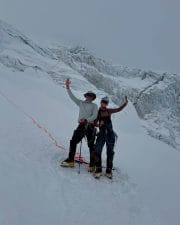
Cleaning the Mountain
The Sagarmatha Pollution Control Committee reported that the Nepal Army helped carry down 100 bags of recyclable waste from Pangboche to Lukla. Climber Paul Adler told me he saw drone after drone flying rice bags filled with trash down from Camp 1. By the way, Paul and his daughter, Bianca, summited 18 years after Paul summited in 2007.
No PR, Only Oxygen and Hypox Pre-Acclimatization
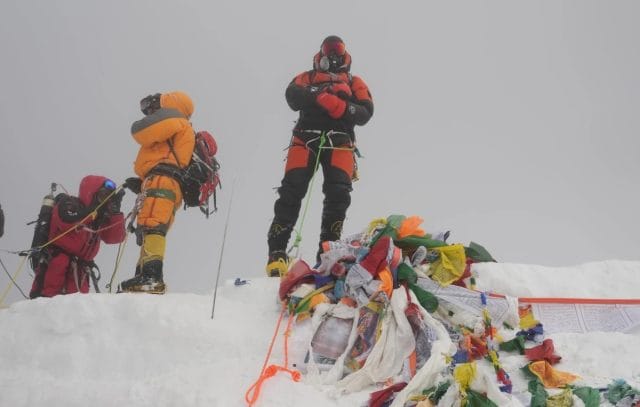
Note: I have been unable to verify this claim independently; it’s being widely reported across multiple media outlets. I became aware of this yesterday after being alerted by the Washington Post.
We were all aware of the UK xenon-powered climbers due to the widespread publicity campaign. Nevertheless, there was an under-the-radar climb that usurped them, which didn’t use the noble gas. Andrew Ushakov of the U.S. made it from New York City to the summit of Everest in 3 days, 23 hours, and 7 minutes, assisted by five Sherpa with Elite Exped. You can read his version of how and why at his site. Elite issued this statement:
Huge Congratulations to Andrew Ushakov (@ushakov343 )who has just become the fastest person to go from sea-level to the summit of Everest in just 3 days, 23 hours and 7 minutes.
Normally, Everest climbs take 50+days, largely because of the acclimatisation period. Andrew did hypoxic training beforehand as part of his mission preparation – spending 400+hours in a hypoxic tent to help acclimatisation. Andrew started his challenge from Sea Level, starting at New York on May 15th at 00.30am and flying to Kathmandu, and then flying to Everest Base Camp. Then he and his team climbed from Base Camp and stood on the summit of Everest on May 19th date at 9.22am – meaning he completed the incredible feat in 3 days, 23 hours and 7 minutes – this sets a new benchmark in what is possible for humans to achieve. Huge Congratulations Andrew – we are proud to have helped you realise your dream! (*Andrew used traditional bottled oxygen for the climb from Base Camp to the Summit.)
This is a triumph, not just for Andrew, but for everyone who believes in their dreams. Andrew only started climbing in 2020, he is a father and multiple business owner. He is not a full-time athlete, which makes this feat even more impressive.
Andrew’s Sea to Summit journey saw many challenges along the way, including breaking his shoulder in an avalanche just months before this epic challenge. Working closely with Andrew and his doctors, our team, including guide @tejan.g, were able to put extra safety precautions in place to ensure he could climb with us in the safest way possible.
Andrew is now safely down the mountain and on his way he and the team removed waste from the Camps as they went. Truly inspirational.
Shout out to the @eliteexped team who supported Andrew’s record including – Tejan Gurung (TJ), Pur Bahadur Gurung (Yukta), Bidhan Shrestha, Sujal Gurung, KiTemba Sherpa, Pemba Chhewang Sherpa, our porters and Base Camp crew! You should all be very proud!
“Powered by Xenon”
Garth Miller, Alastair Carns, Anthony Stazicker, and Kev Godlington left the UK on Friday, May 16 and summited on May 21, five days later, supported by eight Sherpas, of whom five summited. On May 5, the four climbers underwent 30-minute xenon therapy at a hospital in Germany to increase their red blood cell count. They also spent more than 500 hours of hypoxic training, including sleeping in a hypoxic tent and training with a mask, according to Miller in media interviews.
The four are all former UK military personnel, and Miller had summited Everest twice before, in 2004 and 2022. The program was the brainchild of Dr. Michael Fries, head physician for anesthesia and intensive care medicine at St. Vincenz Hospital in the German town of Limburg an der Lahn and Lukas Furtenbach of Furtenbach Adventures.
Mission Everest 7 days team on the summit!! Safe descent! One InReach run out if battery so don’t be confused. They are still the full mission team with photographer @sandro.g.h and the incredible FA Sherpapower team.
Noted high-altitude physician and Everest summiteer, Dr. Peter Hackett, said in a podcast with Steve House, “…while noble gas may briefly stimulate erythropoietin (EPO), the few studies done so far lack solid evidence of improving red blood cell count or performance and explained the risks of unsupervised xenon use and stressed the importance of controlled research before drawing conclusions.”
Click on these links to listen to the House Podcast and Furtenbach’s interview on the use of xenon gas. Hacket was interviewed on NPR on May 18th and said:
Well, I think there are other things that are being used by this group that are probably more important. For example, they did hypoxic pre-acclimatization. That means that they slept in tents over their beds at night that contained air that had less oxygen in it, in order to simulate high altitude. And they did that for 6 to 8 weeks, is my understanding. So that pre-acclimatizes the body, gets the body ready to go to high altitude. Secondly, and most importantly, they’re using oxygen on the climb. And that’s the most helpful thing that any Everest climber can have, is to use oxygen. So it’s so hard to tell if there’s any additional benefit from xenon.
In any event, whether it was the pre-acclimatization, the use of supplemental oxygen starting from unknown altitudes and flow rate or the xenon protocol, all involved have changed the way the world thinks of climbing Everest. For some, who face time constraints when considering climbing Everest, it may be viewed in the same light as a climb of Mont Blanc or Ama Dablam, provided they have $150,000.
In addition to the climb, they aim to highlight the veterans’ community and their welfare, and to raise £1 million for many Armed Forces and Veterans’ charities, including those that support bereaved military families. You can donate at this link.
Potpourri
French climber Marc Batard is said to have abandoned his effort to create an alternative route to the Khumbu Icefall by installing a via ferrata-style route on the flanks of Nuptse due to a lack of support and funding from the Nepalese government.
Also, many of my readers have asked about International Mountain Guides. Eric Simonson told me:
“IMG did the Lobuche Peak trip and several Everest trekking groups, but I decided to take a sabbatical in 2025 from climbing Everest, so we sent our Everest climbers with another guide service. I must say, after conducting at least one Everest trip every spring since 1997 (and four more in the 80’s and early 90’s), I had forgotten what it was like to actually spend April and May without the lurking dread of the 2 am phone call from the Himalayas!”
Winds to return
It is still windy on Everest, but these are the remaining teams to watch (I may have missed a few).
- Adventure Consultants at C3
- Alpine Ascents International (AAI) at C4
- Dreamers Destination Treks and Expedition Pvt. Ltd
- Kaitu Expedition
- Madison Mountaineeering at C4
- Seven Summit Treks
- 7 Summits Club at C2
Other teams on the Tibetan side that will ascend before the end of the month include Alpenglow, a Chinese team; Climbalaya Treks & Expeditions; Himalaya Expeditions; Kobler & Partner; and Imagine Nepal.
Alpenglow updated with:
Update from Everest: The team is now at Advanced Base Camp (21,000 ft) and resting up for their summit push. If all goes to plan, we’ll move toward the top over the next 8 days. This season has been classic: high winds, small summit windows, and a test of patience. But that patience may just pay off—our sights are set on a warm, windless summit day with the mountain to ourselves. Stay tuned.
People to Follow Update
American Tyler Andrews, 34, will make a second attempt at the speed record for ascending Everest, starting at 11:30 pm Nepal Time, May 22. He had boot issues the first time. Karl Egloff, also making a speed run, round-trip run without O’s,
Climb On!
Alan
Memories are Everything
Death Total–Ten across the Himalayas
1, 2. April 8–Annapurna: Rinje Sherpa and Ngima Tashi Sherpa, avalanche on Annapurna while working for Seven Summits Treks.
3. April 26–Ama Dablam: Austrian Martin Hornegger, 64, died descending Ama Dablam after summit.
4. May 12–Kanchenjunga: French climber Margareta Morin, 63, died ascending Kanchenjunga, climbing with Peak 15 Adventure.
5. May 5–Makalu: American Alexander (Alex) Pancoe, 39, died at Camp 2, climbing with Madison Mountaineering.
Everest–Five Deaths
1 April 2–Nepali Lanima Sherpa, 55, reportedly died due to high altitude sickness at EBC with an unidentified expedition operator.
2. Early May, Ngima Dorji Sherpa died at EBC from reportedly a brain hemorrhage. He worked for Seven Summits Treks.
3 May 4–Pen Chhiri Sherpa reportedly had a heart attack at Camp I while working for TAG Nepal.
4. May 15–Filipino Philipp II Santiago, 45, reportedly died of unknown causes at C4 on his Everest ascent with Snowy Horizon.
5. May 16, 2025, West Bengal, Indian, Subrata Ghosh, 45, died near the Hillary Step after summiting with Snowy Horizon.
Nepal Permit Update
As of this post, around 500 people have summited Everest. Across Nepal’s climbing peaks, through April 25, 2025, the Ministry of Tourism collected USD 5.2 million in royalties, with Everest accounting for USD 4.6 million. This is the 2025 tally for the 8000ers with the latest for Everest only as the Nepal Government has not made the others public:
| 8000er | Teams | Male Clients | Female Clients | Total |
| Annapurna I | 6 | 49 | 17 | 66 |
| Cho Oyu | – | – | – | – |
| Dhaulagiri | 2 | 9 | 6 | 15 |
| Everest | 47 | 382 | 86 | 468 |
| Kanchenjunga | 4 | 26 | 15 | 41 |
| Lhotse | 9 | 85 | 22 | 107 |
| Makalu | 7 | 60 | 17 | 77 |
| Manaslu | – | – | – | – |
| TOTALS | 71++ | 582++ | 151++ | 1025 |
Climb On!
Alan
Memories are Everything
An email notification is sent to everyone on the mailing list for each new post. If you’d like to see something special this year, please post a comment or send me an email.
The Podcast on alanarnette.com
You can listen to #everest2025 podcasts on Spotify, Apple Podcasts, Breaker, Pocket Casts, RadioPublic, Anchor, and more. Just search for “alan arnette” on your favorite podcast platform.
Previous Everest 2025 Season Coverage Posts
- Everest 2025: Fast Everest Summits 3 or 5 Days?
- Everest 2025: Two More Deaths, along with Windy Summits
- Everest 2025: Winds are Retuning –Summit Now or Later?
- Everest 2025: Weekend Update May 18–Summit, Summits and Preventable Deaths
- Everest 2025: More Everest Summits and A Death Reported
- Everest 2025: Mass Everest Summits, with More to Come
- Everest 2025: Earthquake, Summits, Rescues and a Death–Updated
- Everest 2025: Weekend Update May 11–Summit, Summits and more Summits
- Everest 2025: Lhotse Summits, Everest Soon & Anticipation
- Everest 2025: Managing the Crowds for a “Summit Weekend”
- Everest 2025: Pumori Avalanche, Makalu Death
- Everest 2025: Weekend Update May 4–Waiting on the Ropes
- Everest 2025: Climbers to Watch and a Death on Ama Dablam
- Everest 2025: Weekend Update May 4–On the Move!
- Everest 2025: Climbers to Watch and a Death on Ama Dablam
- Everest 2025: Weekend Update April 27–On the Move!
- Everest 2025: Remembering The Day Nepal Shook–10 Years Later
- Everest 2025: When Will They Summit?
- Everest 2025: Weekend Update April 20–Base Camp Sprawl
- Everest 2025: April 18, A Day to Remember
- Annapurna 2025: Podcast with John Black on Sherpa Deaths
- Everest 2025: Weekend Update April 11
- Annapurna 2025: Summit and Missing Sherpas
- Everest 2025: Weekend Update April 6
- Annapurna 2025: Risky Decisions – April 5 Update
- Everest 2025: Weekend Update March 30
- Everest 2025: Weekend Update March 23
- Everest 2025: Welcome to Everest 2025 Coverage – an introduction to the Everest 2025 Spring season
Background
- Everest by the Numbers: 2025 Edition – A deep dive into Everest statistics as compiled by the Himalayan Database
- Comparing the Routes of Everest: 2025 Edition – A detailed look at Everest’s routes, commercial, standard and non-standard
- How Much Does it Cost to Climb Everest: 2025 Edition – My annual review of what it costs to climb Everest solo, unsupported, and guided
The Most Common Mistakes Climbers Make
The most common mistakes climbers make include underestimating the effects of altitude on their bodies and overestimating their physical abilities. Summit Coach can help you achieve a balanced approach to preparation and clarify the confusing advice often found online. Please visit the Summit Coach website for information on prices and offerings.

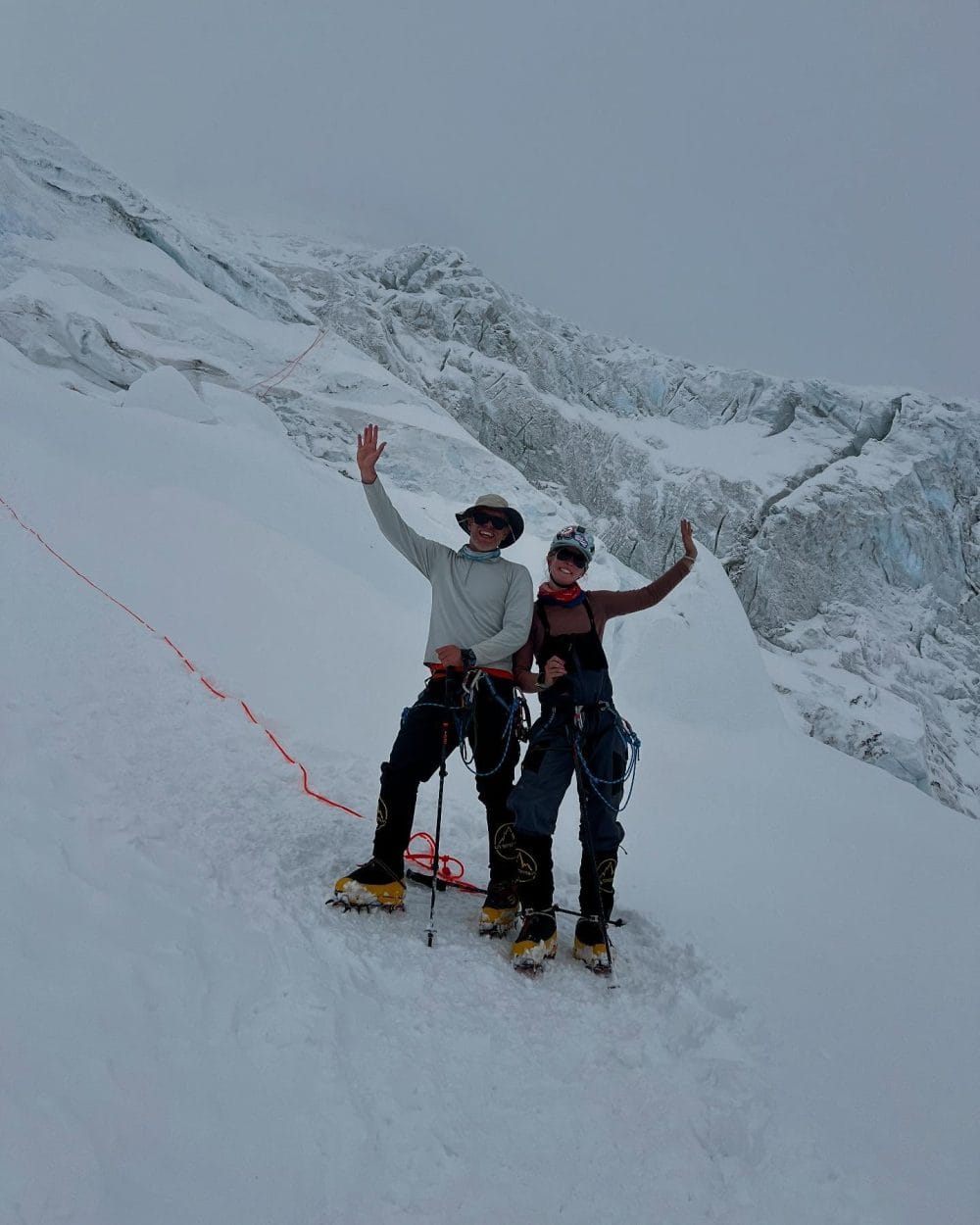
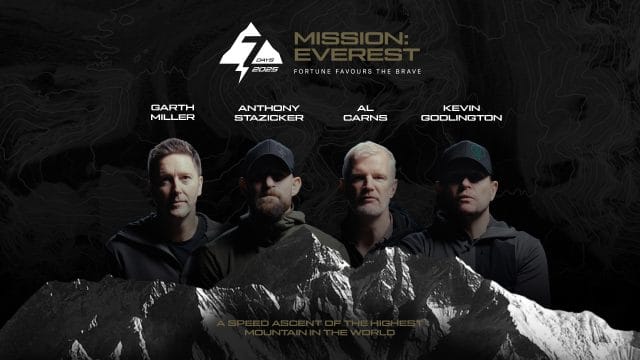


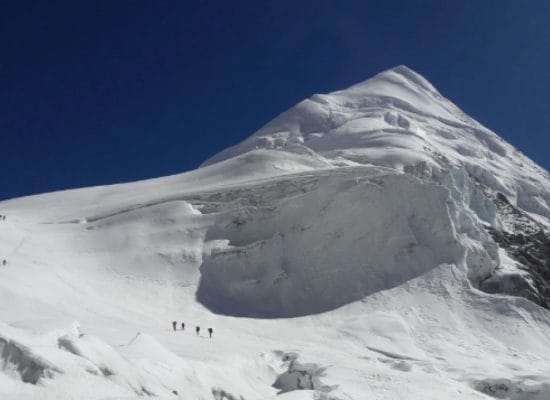
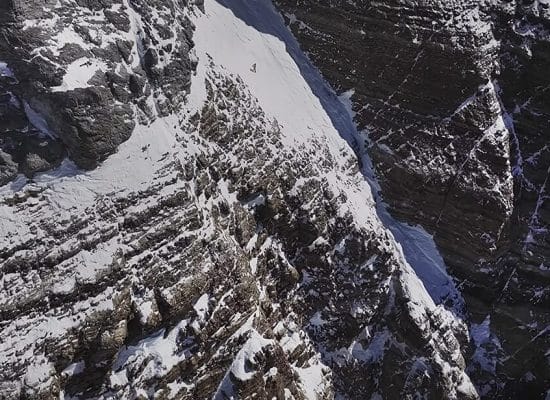
6 thoughts on “Everest 2025: Fast Everest Summits 3 or 5 Days?”
Karl Egloff started from Base Camp Friday 6pm Nepal time. You can follow him live here: https://share.garmin.com/KARLFKT
On another note: I‘m wondering if the weather on Everest becomes more unpredictable with climate change?
Thanks for your excellent coverage Alan!
Weather on high peaks has always been challenging, primarily due to a series of micro zones. You can have perfect weather on the summit and at base camp but face high winds mid-mountain, yet people like Michael Fagin, Marc DeKeyser, Chris Tomer, and the Swiss have become very adept at this. The most accurate forecasts come from human-curated sources, not the free ones on the internet.
Hi Alan! Been a reader since before 2008. I always look forward to your coverage. I guess for me I don’t see a big deal or record in the 3 day or 5 day summits. They still had to acclimatize regardless of it being at Everest or elsewhere. So what does that mean for the climbers who are there and then summit in one day?
Thank you for your updates and keeping us all informed!
Thanks Kathleen. I think everyone plays their own game and doesn’t get distracted by what others do. We don’t know if this is a one-off or the new norm. All I know is that, for me, my personal opinion is that expedition mountaineering is a process to be enjoyed, not rushed. You can be safe, respect the mountain and still take your time. But that’s just me.
Your reporting has only improved through the years.
Thanks for those of us who will only experience climbing Everest vicariously through your lens.
Thanks, I sincerely appreciate the feedback.
Comments are closed.